Carpenter Work in Pakistan: Skills, Duties and Tools
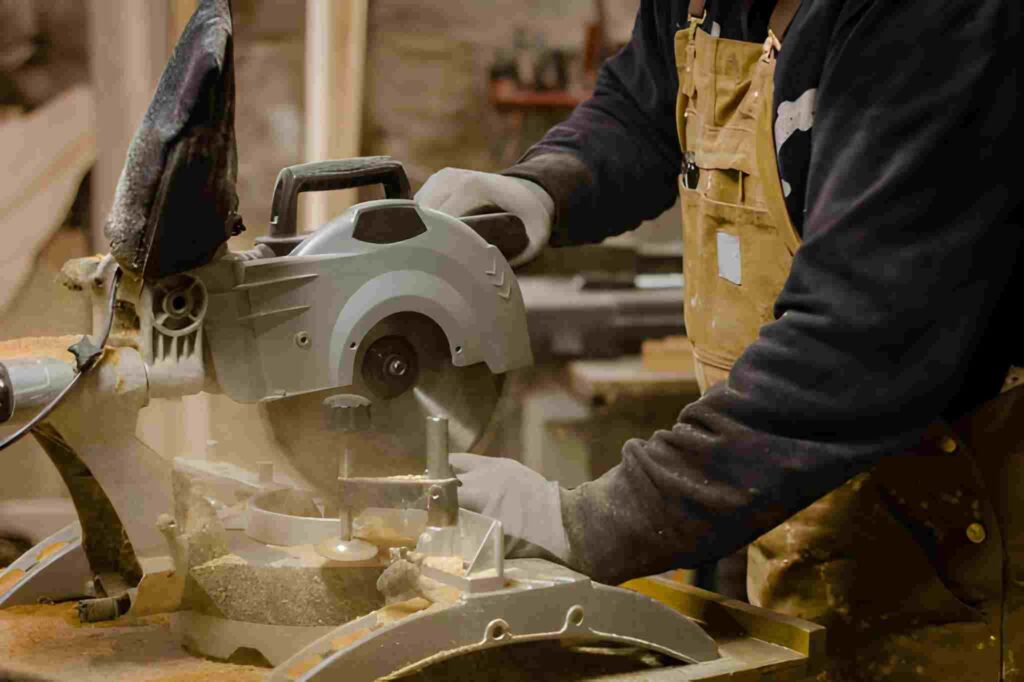
Carpenter Work in Pakistan: Skills, Duties and Tools In Pakistan, being a carpenter is one of the most important and well-respected jobs in the building, remodeling, and furniture businesses. Carpenters are very important to modern Pakistani homes and businesses. They do a lot of different kinds of woodwork, from furniture to industrial buildings and residential woodwork. Before choosing a job, many people compare different technical trades. If you are one of those people, reading Carpenter vs Electrician can help you. What Is Carpenter Work in Pakistan? Carpenter work in Pakistan involves building, installing, and repairing wooden structures. This includes furniture construction, door and window installation, roofing frames, cabinets, partitions, and decorative interior elements. Pakistani craftsmanship has a long history of working with wood. There are different types of carpenters who specialize in different areas, from finish carpentry to business installations. What You Need to Know to Be a Carpenter 1. Technical Skills Getting exact measurements and cuts of wood Learning how to do structure carpentry How to join and fit things Reading plans and drawings for a building site Making beds, cabinets, and tables and other furniture 2. Practical Skills Skills with both hand and power tools Methods of finishing, like shining, sanding, and varnishing On-site fixing of problems and accuracy 3. Soft Skills The Conversation Paying close attention to Managing your time Getting to know customers What Pakistani Carpenters Need to Do and Should Do 1. Planning & Layout The area is analyzed, the sizes are measured, and then the structure is planned. 2. Construction Work Includes framing, roofing support, and heavy-structure carpentry. 3. Furniture Making Pakistan is known for making unique furniture by hand. For upgrades and inspiration, explore Carpenter Furniture Ideas. 4. Repair & Restoration Many homeowners require wood repairs, which is covered in detail in Carpenter Services for Furniture Repairs. 5. Finish Work Putting on the finishing touches, polishing, and putting on the trim and baseboards. Different Types of Karachi Carpenter Work 1. Residential Carpentry Includes home furniture, cabinets, wardrobes, doors, and ceilings. More detail here: Commercial Carpenter vs Residential Carpenter 2. Commercial Carpentry Shop fittings, office partitions, counters, and interior structures. 3. Finish Carpentry Articles about refinements and trims can be found in Finish Carpenter vs Trim Carpenter 4. Furniture Carpentry Custom beds, tables, shelves, dining sets, and wardrobes. 5. Pest-Protection Carpentry Wood is prone to insect damage in Pakistan, especially ant colonies. More help right here: How to Get Rid of Carpenter Ants Tools that every carpenter must have Hand Tools Picks for carpenters Chisels Hammers Screwdrivers Handsaw Measuring tape Squares Power Tools Drills Circular saw Router Jigsaw Sander Finishing Tools Polishing pads Varnish spray Sandpaper Carpenters in Pakistan can get training and find work. Carpenter jobs in Pakistan have a lot of room for growth, especially since more people want to live in their own homes. 1. Apprenticeships Learning the traditional way from a great carpenter with a lot of experience. Full information here: Carpenter Apprenticeship Programs 2. Technical Certifications TEVTA, NAVTTC, and vocational institutes offer structured carpentry courses. 3. Professional Advancement Those wanting to enter carpentry professionally should read: How to Become a Carpenter in 2025 Carpenter Insurance in Pakistan Many carpenters running workshops or small teams also consider insurance for safety and financial protection. More information here: Carpenter Insurance Explained Cost of Carpenter Work in Pakistan Carpentry charges vary depending on: City Type of wood Design complexity Labor cost Average pricing ranges from Furniture and home decor cost between 500 and 3000 rupees per square foot. Problems That Come Up at Work A lot of the time, Pakistani builders deal with Costs of good wood going up Not much high-tech equipment in smaller towns Termite problems Power tools can be dangerous. Rivalry in the market Conclusion In Pakistan being a carpenter is a good way to make a living and an important job for both homes and businesses. From custom furniture to major construction components carpenters deliver long lasting craftsmanship. 1With the right skills tools and training anyone can build a successful future in carpentry in Pakistan. FAQs What is carpenter work in Pakistan? In Pakistan carpenters build place and fix things made of wood like doors windows cabinets furniture roofs and parts of interior design. Carpenters work with natural wood MDF plywood and engineered boards. How much does carpenter work cost in Pakistan? Carpentry costs depend on the city, material type, and design complexity. Usually prices range from Rs. 500 to Rs. 3000.00 per square foot for furniture wardrobes and woodwork inside. What tools are commonly used in carpenter work? Hammers chisels carpenter pencils saws and measure tapes are some of the hand tools that carpenters use. Power tools like drills, circle saws, routers, sanders, and jigsaws are also used. Is carpentry a good career in Pakistan? Yes. Due to rising construction and furniture demand carpentry offers excellent earning potential. Skilled carpenters can work independently join companies or open workshops. Do carpenters in Pakistan need formal training? Not necessarily. Many start through apprenticeships. However, formal technical training from TEVTA, NAVTTC, or vocational schools helps improve skill level and earning prospects. External References Carpenter Work: Go Construct Bls.Gov: Carpenter
Carpenter Pencils: Purpose, Types and How to Use Them
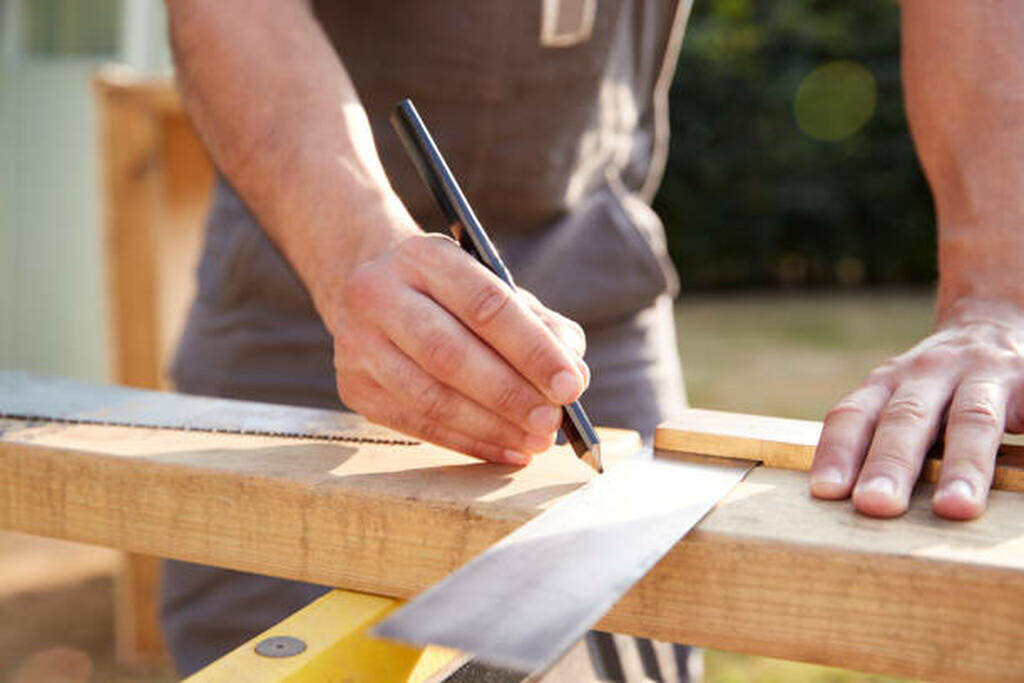
Carpenter Pencils: Purpose, Types and How to Use Them When it comes to marking timber, concrete, and other rough job-site surfaces, carpenter pencils are among the most reliable tools a tradesperson can carry. Their flat shape, durable lead, and ease of handling make them essential for carpenters whether you’re working on commercial carpentry or detailed finish carpentry. If you are starting a trade and exploring career options, you may also compare fields like woodworking and electrical work learn more here: Carpenter vs Electrician – Which Trade Is Right for You? What Makes Carpenter Pencils Unique? A carpenter pencil stands apart from a regular round pencil because of its rectangular or flat body and extra-strong lead. The flat shape prevents it from rolling off sloped surfaces a significant advantage at furniture shops construction sites or during residential carpentry tasks. Learn more about the different work environments: Commercial Carpenter vs Residential Carpenter Carpenter pencils were developed specifically to mark rough materials like timber, stone concrete and drywall situations where a normal pencil would break or create weak lines. Purpose and Common Uses Key Applications Marking lumber for measurement and cuts Fine layout marking for finish carpenter tasks Marking on rough or uneven surfaces Scribing curves or shapes Spacing during decking or cabinet alignment Want to explore trimming and fine woodworking? Finish Carpenter vs Trim Carpenter Additionally, carpenter pencils serve well during furniture restoration. If you are getting repairs or designing new pieces: Carpenter Services for Furniture Repairs Types of Carpenter Pencils Carpenter pencils come in three primary types: 1. Flat Carpenter Pencils the Old Way Built to last with a wood frame, this tool is perfect for most tasks on the job site. 2. Carpenter Pencils with Motors Great for precise work, and it’s easy to refill or sharpen. 3. Colored Carpenter Pencils For marking darker materials or when lines must stand out. How to Use Carpenter Pencils Proper Sharpening Because of the pencil shape, a utility knife is usually used to sharpen it. Create a chisel-shaped tip to draw fine or bold lines depending on your angle. Marking Techniques Use the flat edge for bold marks Use the narrow edge for precision lines Drag the pencil along a straight edge or angle square Scribe curves by tracing the material’s edge Choosing the Right Carpenter Pencil Ask yourself: Do I need bold or precise lines? Will I work mostly on lumber or fine furniture? Do I prefer wood casing or a mechanical system? For people entering the field and learning tool selection as part of training: Carpenter Apprenticeship Programs – Skills, Pay & Opportunities If you are planning to start your carpentry career soon and want to understand requirements, skills and earnings: How to Become a Carpenter in 2025 Care and Maintenance Keep multiple sharp pencils available Use color coding for purpose Store safely in your tool belt Replace when short or repeatedly breaking If you encounter carpenter ants damaging your woodwork or workshop, here’s a helpful guide: How to Get Rid of Carpenter Ants When Insurance Matters Carpentry tools and workshops face risks like fire, workplace injury, and wood-damage pests. 1Insurance safeguards your carpentry business and equipment.1 Learn more: Carpenter Insurance Explained for Small Business Owners Where Carpenter Pencils Fit Into Furniture Craft From layout marks to curve tracing, carpenter pencils are invaluable in designing or building interiors. If you want DIY creativity inspiration: Carpenter Furniture Ideas Conclusion Whether you are a hobbyist or a professional carpenter, carpenter pencils are essential. Their flat shape, durable lead and ability to mark everything from structural wood to fine furniture make them indispensable across the trade. Questions That Are Often Asked Q1: What do you do with a carpenter pencil? A carpenter pencil can be used to make marks on rough surfaces like concrete, wood, drywall, and more. It holds its shape well because it’s flat, so it won’t roll around while you’re building or working with wood. Q2: Why do builder pencils have a flat top? You can use a carpenter pencil on a sloped surface without it rolling off which is very useful on the job. The flat form is also easier to hold and lets you mark in different thicknesses based on the angle. Q3: Can I not use a carpenter pencil but a normal pencil instead? Yes, but regular pens don’t last as long, break more easily, and don’t leave good marks on rough floor. For building and construction, carpenter pencils make lines that are easier to see and are easier to hold. Q4:How do you sharpen a carpenter pencil? You may use a regular knife or a tool made just for that purpose. Most builders like to use a knife because it has a chisel-shaped tip that lets them make both thick and thin lines. Q5:What kind of lead is used in carpenter pencils? The graphite leads in carpenter pencils are bigger and stronger so they can handle rough surfaces and pressure. Depending on how long they need to last and how visible they need to be, they usually come in hard (H) or soft (B) lead types. External Link Carpenter pencils: Pencil China
Carpenter Tools in Pakistan: Important Equipment Guide

Carpenter Tools in Pakistan: Important Equipment Guide For many years, Pakistan has had one of the most important and recognized trades: carpentry. It shows how well a carpenter can do their job when they use certain tools to fix things or make frames out of wood for furniture. What are the most important Pakistani Carpenter Tools? This guide will explain. It will also show you how to pick the right tools for work or at home. Understanding the Role of Carpenter Tools A builder needs a good set of tools to get the job done quickly and well whether they are working on a business or a home project. Picking the right Carpenter Tools from old-fashioned hand tools to modern power tools can make a big difference in how safe accurate and productive the work is. Know the different tools you can use and how they all work together to make the whole thing if you want to become a carpenter. Learn how to become a carpenter in 2025 by reading How to Become a Carpenter in 2025 or Carpenter Apprenticeship Programs. These books will help you plan your career well. Categories of Carpenter Tools A builder needs two main kinds of tools: hand tools and power tools. Each group can be used in different ways, depending on the project’s size and difficulty. 1. Hand Tools These are very old instruments that you play by hand. For fine finishing, repairs, and work that needs to be done right, these are great. Here are a few popular hand tools: Hammer: Used to drive nails and put wood pieces together. Chisels: Important for shaping and cutting wood. Hand Saw: It cuts wood into various shapes and sizes. Tape Measure: Checks the sizes before cutting and putting things together. Try Square: Helps make sure that right angles are correct. Screwdrivers: To tighten and remove screws in frames and furniture. 2. Power Tools Today more and more people in Pakistan work with wood and they need power tools to do the job quickly and correctly. A lot of people like these power tools: Circular Saw: It cuts wood well and fast. Electric Drill: It’s used to drill holes and attach screws. Jigsaw: Just right for cutting bends that aren’t straight. Planer: Just right for cutting bends that aren’t straight. Router: It helps make parts and edges look good. Sander: Giving wood surfaces a shiny look. Must-Have Carpenter Tools for Pakistani Workshops If you want to start a carpentry shop in Lahore, Karachi, or Islamabad, Pakistan, you will need the following: Work Bench: A strong base that can keep things in place. Measuring Tape & Ruler: Important for planning and accuracy. Clamps: Something strong that can hold things To hold things in place while you glue or cut them strong. Hand Plane: Perfect for leveling and smoothing out areas. Mallet: It is safe to use with chisels to shape wood. Combination Square: It’s easy to draw 45° and 90° lines. Power Drill: It speeds up the process of getting and putting things together. Safety Gear: gloves shields and dust masks to keep everyone safe at work. These are the most important tools for any carpenter, especially those who works in small shops or companies. If you want to start your own woodworking business, you should also read about Carpenter Insurance for Small Business Owners to make sure you are safe and the business will last. Modern Trends in Carpenter Tools in Pakistan Pakistan’s woodworking business has changed a lot over the years. New tools like electric drills laser measuring tools and digital calipers have made working with wood faster and more accurate. Hall Road in Lahore Saddar Market in Karachi and Raja Bazaar in Rawalpindi are all well-known places to buy tools both foreign and made in Pakistan. Online stores like Daraz ToolsBazaar and Pakistan Hardware Store have also made it easier for builders to get good tools without having to leave their shops. Carpenter Tools for Different Specializations Every builder has their own set of tools that they use. The tools can be very different depending on what they do. 1. Finish Carpenters These craftsmen work on furniture, trim, and small details. Find out more about what they do in Finish Carpenter vs. Trim Carpenter. Common tools: Cutting tools, nail guns, sanders, and miter saws are all out there. 2. Commercial Carpenters They work on big projects like stores and office buildings. Check out Commercial Carpenter vs. Residential Carpenter for more information. Common tools: Tools like electric drills, circle saws, and concrete formwork systems. 3. Residential Carpenters These professionals build and repair home interiors. Common tools: Tools like hammers drills saws and screwdrivers. They can also do work like Carpenter Services for Furniture Repairs which fixes tables and builds shelves. Carpenter Tools Maintenance Tips Your tools will last longer and work better if you take good care of them: Clean your tools every time you use them to keep them from rusting. The moving parts should be greased often. Keep your tools somewhere dry. Keep blades and bits sharp when you need to. Check the batteries and power lines for damage or wear. If you follow these maintenance tips your tools will last longer and not need to be replaced as often. Choosing the Best Carpenter Tools in Pakistan When you buy Carpenter Tools think about these things: Purpose: Figure out if you need heavy-duty construction tools or tools for small do-it-yourself jobs. Brand Reputation: Choose names you can trust like Dewalt Bosch Makita or Stanley. Durability: Also, look at the material used to make hand tools. Warranty & Support: In Pakistan choose items that come with help after the sale. Budget: Compare prices at more than one store to get the best deals. Want some unique ideas on how to build furniture? Check out Ideas for Carpenter Furniture. Safety Guidelines for Using Carpenter Tools Safety is the most important thing. Whether you’re a beginner or an experienced worker make sure you follow these important safety rules: Always wear safety
Shuttering Carpenter: Important Skills and Job Duties
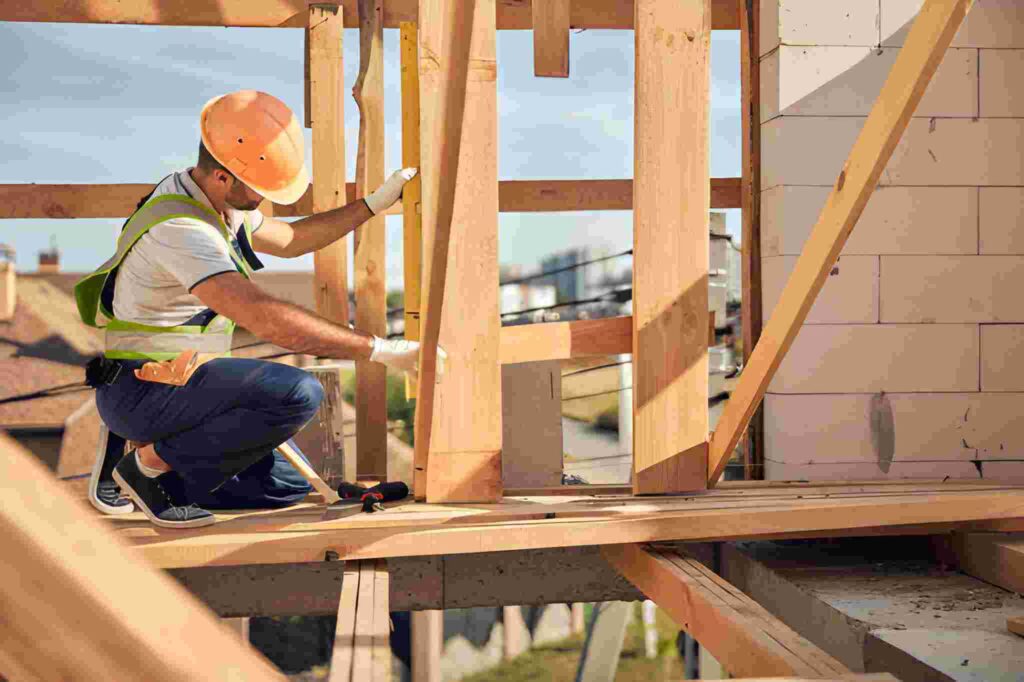
Shuttering Carpenter: Important Skills and Job Duties A shuttering carpenter is an important worker in the building business. These people are experts at making models also called forms, that keep concrete in place until it hardens properly. Whether they’re working on homes bridges or skyscrapers shuttering carpenters build the framework that makes things last. This article will talk about the skills, responsibilities, career path, and tools that every shuttering carpenter should have. It will also talk about how this job is similar to others in the industry. What Is a Shuttering Carpenter? A shuttering carpenter who is also called a formwork carpenter makes temporary forms out of wood metal or plastic that are used to pour concrete into for building parts like walls slabs columns and beams. This job needs a lot of expert know-how accuracy and teamwork. Shuttering builders on the other hand mostly work on big building projects and improvements to infrastructure. Their work has a direct effect on how strong and straight the frame of a building is. Key Responsibilities of a Shuttering Carpenter On building sites shuttering carpenters do a range of technical and physical jobs. Some of their main responsibilities at work are: Understanding and reading designs and building plans. Using plywood, wood, or steel to build forms and measuring, cutting, and putting them together. Putting in place formwork methods to shape concrete parts. Release agents are being used to keep the concrete from sticking to the molds. Taking down the molds safely after the concrete has hardened. Updating tools and making sure safety rules are followed on the job spot. Essential Skills Every Shuttering Carpenter Needs 1. Technical Knowledge It is very important to understand building drawings and structure plans. A shuttering builder should be able to accurately figure out lengths and angles. 2. Physical Strength and Stamina Being physically fit is important for this job because it requires lifting heavy things and spending long hours on construction sites. 3. Attention to Detail A structure’s integrity can be compromised by even a small measurement mistake. Focus and accuracy are skills that can’t be compromised. 4. Teamwork and Communication Site engineers, steel fixers, and concrete workers all work closely with shuttering builders. Good communication is key to getting projects done on time. 5. Knowledge of Materials Different projects need different kinds of materials. For example, residential projects need wood formwork, while high-rise buildings need steel formwork. Tools and Equipment Used by Shuttering Carpenters A skilled shuttering carpenter needs to know these things: Assessing spirit levels and tapes Drills and power saws Nails and hammers Bolts and clamps Safety equipment include harnesses, helmets, and gloves Tool maintenance on a regular basis guarantees effectiveness and lowers working risks. Career Path and Training Opportunities Although finishing a carpenter apprenticeship program is a significant advantage, formal schooling is not required to become a shuttering carpenter. Apprenticeships impart practical skills, sophisticated construction methods, and safety procedures. See our guide on Carpenter Apprenticeship Programs Skills Pay & Opportunities for additional information on organized learning opportunities. Many shuttering carpenters begin as assistants and work their way up to supervisory positions or, with more experience, construction foremen. Comparing Shuttering Carpenters with Other Carpenter Types Let’s examine how shuttering relates to a few comparable transactions: Finish Carpenter: focuses on small features inside the house, like cabinetry and trim. Commercial Carpenter: works on big projects like building shops or offices. Furniture Carpenter: specializes in making or fixing furniture out of wood. General Carpenter Services: Does a lot of different home repair and woodworking jobs. Shutting carpentry is still one of the most structurally important jobs in building even if each craft demands different skill sets. Safety Practices and Site Regulations For any carpenter who works on shutters safety comes first. 1Following the rules for safety in your business lowers the chance of having an accident. Important steps include the following: Putting on protective gear (PPE) all the time. checking ladders and platforms on a regular basis. making sure that every tool is in good shape. Not taking steps that put safety at risk. Reporting hazards immediately to supervisors. Organizations like OSHA and CITB provide useful resources and certifications on construction site safety. Earning Potential and Job Outlook The demand for shuttering carpenters continues to rise globally due to infrastructure expansion. Between $20 and $35 an hour will be the average wage in 2025, but it will depend on the skill and location. If they work on government or high-rise jobs, foremen and senior carpenters can make a lot more money. Check out our comprehensive guide on How to Become a Carpenter in 2025 if you’re looking for long-term stability. Conclusion In contemporary construction a shuttering carpenter is an unsung hero. They are good at making correct and long-lasting formwork, which means that concrete buildings will last for a long time. Because of the growing need in both residential and business projects, it’s a great job for people who love craftsmanship, working with others, and being precise with their work. If you want to become a shuttering carpenter, learning what they do is the first thing you need to do to become an expert in the craft of making structures. FAQs About Shuttering Carpenters 1. What is the role of a shuttering carpenter in construction? The shuttering carpenter creates temporary molds or formwork to retain concrete as it cures. These molds form beams columns slabs and foundations. They make sure the concrete sets properly and is strong and accurate. 2. What qualifications do I need to become a shuttering carpenter? A shuttering carpenter generally needs basic schooling on-the-job training or an apprenticeship. Practical skills safety awareness and building site experience are highly necessary. 3. What tools and equipment does a shuttering carpenter use? Shuttering carpenters use saws drills measuring tapes, spirit levels hammers nails and steel clamps. To guarantee safety they wear gloves helmets and boots. 4. How is shuttering carpentry different from other types of carpentry? Shuttering carpenters build robust temporary structures to shape concrete unlike
Carpenter Furniture Ideas to Upgrade Your Living Space

Carpenter Furniture Ideas to Upgrade Your Living Space Introduction Furniture made by a builder is always a good choice for a home because it looks excellent, is useful, and lasts a long time. Furniture made by a skilled builder is different from mass-produced goods because it can be customized, is well-made, and lasts a long time. Whether you want a traditional dining table, a modern closet, or a custom bookcase, carpenter furniture can totally change the way your home looks and feels. Why Choose Carpenter Furniture? Durability: Built by hand from strong materials like hardwood. Customization: Specifically made to go with the style and plan of your home. Aesthetics: Certain designs and colors are not compatible with mass-produced furniture. Sustainability: In today’s world, the vast majority of carpenters use environmentally friendly products and techniques. Types of Carpenter Furniture You Can Explore 1. Living Room Essentials Furniture for coffee tables Media chests and TV stands Couches with cushions made from solid wood 2. Bedroom Furniture Flip-flop beds that can be turned into storage space Furniture armoires made of wood that have individual storage TV stands, dressers, and end tables 3. Dining Room Upgrades A huge table with many chairs Bench seats and wood seats Beautiful sideboards with storage Commercial Carpenter Furniture Furniture made by a carpenter isn’t just for homes; businesses can also benefit from having custom furniture. Commercial carpenters who work for shops, restaurants and offices are often hired to make furniture that looks good, lasts a long time and is useful. In everything they do, from making storage units to guest desks, they help businesses find the best balance between form and function. Creative Ideas for Modern Homes Space-Saving Furniture: Multipurpose tables and shelves that fold up. Rustic Wooden Designs: Make the spaces seem warm and welcome. Minimalist Furniture: Layouts for apartments that are streamlined and have a minimal quantity of items that are not directly necessary. Maintenance Tips for Carpenter Furniture When you dust, use a soft cloth every time. We ask that you stay away from places that are very wet. To maintain the gloss, use wood polish on a regular basis. Avoid leaving items in the sun for extended periods of time if you want the colors to stay vibrant. Conclusion Invest in furniture made by a builder for its quality, longevity, and style. It’s a good idea to buy wooden furniture for your home or office because it will always look good. If you hire a builder, you can be sure that your furniture will look good and be strong. Frequently Asked Questions Q: What does “carpenter furniture” mean? A: Furniture that is handcrafted by experienced woodworkers that incorporates both practicality and individual style. Q: Is custom furniture more expensive? A: Usually yes, because each piece is made to order, but high-quality items can last for decades and increase in value. Q: How long can handmade wood furniture last? A: Take good care of it, and it will last fifty years or more. This makes it a good long-term purchase. Q: Can I repurpose reclaimed wood for furniture? A: Of course. Using reclaimed wood in handmade furniture adds character and makes it last longer. External Links Home Décor and Styling: Better Homes & Gardens Furniture Care & Maintenance: The Spruce
How to Get Rid of Carpenter Ants: Protect Your Woodwork Home

How to Get Rid of Carpenter Ants: Protect Your Woodwork Home Even though carpenter ants don’t eat wood like termites do, they can still do a lot of damage to your home by digging through it. If you know how to get rid of carpenter ants, you can keep your wooden buildings safe and avoid having to pay a lot of money for repairs. This guide gives you steps you can take, ways to prevent problems, and long-term answers that are right for 2025. What Are Carpenter Ants? An enormous ant species, the carpenter ant constructs its nests in damp or decomposing wood. Although they construct their colonies in excavated timber, they do not consume it as termites do. Typical indicators of an infestation consist of: Sawdust-like stuff (called frass) next to wood surfaces Walls making rustling sounds When it’s spring, winged ants come inside. Wood that sounds hollow when tapped Why Carpenter Ants Are a Problem To keep carpenter ants out, you need to keep your house closed up. They can: If nothing is done, Break up the joists, studs, and support beams You can hide inside walls and ceilings. Lower the value of your home. Methods for Eliminating Carpenter Ants in a Methodical Manner If carpenter ants have already ruined your wood buildings, you should fix them right away. Our Carpenter Services can help fix up your home’s wood beams, frames, and other important parts so that problems don’t happen again. 1. Identify the Source Seek out the nest. Determine what to look for: Cluttered areas close to walls or window sills. Wood that is damp in areas such as basements, attics, or sinks Anthills, particularly at night 2. Use Bait Traps Ant bait traps draw in the poison-carrying ants and keep them from returning to their nests. Boric acid or other tried-and-true substances are good choices for bait stations. Put them where: Along ant trails Near suspected entry points Close to moist areas 3. Apply Insecticide Dust or Foam Fill holes, cracks, and nest spaces in walls with insecticide dust. Things made of foam can get deeper into the swarm. Caution: Always wear safety gear and follow the directions on the product. 4. Seal Entry Points Weatherstripping or glue can be used to seal: Wall and base cracks There are holes in the doors and windows. Utility holes for pipes and wires 5. Remove Attractants Cut down on the things that ants like: Fix lines and roofs that are leaking. Firewood should be kept away from the house. Cut off tree branches that are near your house. 6. Call a Professional Get in touch with a professional exterminator if the infestation is severe. They can: Finding the primary and secondary nests Take precautions while handling chemicals designed for industrial use Give methods for prevention that will last Preventing Future Infestations Keep wood dry: In wet places, use dehumidifiers and fix leaks. Inspect regularly: Make sure to inspect the basement, attic, and crawl area. Landscape smartly: Make sure mulch and plants don’t touch the foundation. Best Products to Use in 2025 Terro T300B Liquid Ant Baits Bayer Advanced Carpenter Ant & Termite Killer Plus Ortho Home Defense Insect Killer Spray BASF Alpine Dust Insecticide Combat Max Ant Killing Bait Always buy EPA-approved items, and in 2025, check for changes. Final Thoughts To protect your home’s structure, you need to know how to get rid of carpenter ants. To stay safe, you should act quickly, whether you treat yourself or hire someone else to do it. Make sure they don’t do too much damage before you wait. Protect your wooden investment today. FAQs Q1: Do carpenter ants have higher activity levels at night? Indeed, they are nocturnal, and during the warmer months, they are most active at night. Q2: Is it possible to eradicate carpenter ants without using chemicals? Natural remedies like essential oils, vinegar sprays, and diatomaceous earth can be used, although they might not be as adequate for severe infestations. Q3: How long does it take to get rid of a colony of carpenter ants? It can take anything from a few days to many weeks, depending on the colony’s size and the techniques employed. Is it true that carpenter ants bite? Indeed, if they feel threatened, they may bite, and particular species may irritate minor wounds by spraying formic acid. Q5: Do they pose a threat to people or pets? Usually not; however, infestations may harm structures, and their bites can hurt. References U.S. Environmental Protection Agency (EPA) – https://www.epa.gov University of Kentucky Entomology Department – https://entomology.ca.uky.edu/ef603
How to Become a Carpenter in 2025: Training, Skills & Salary
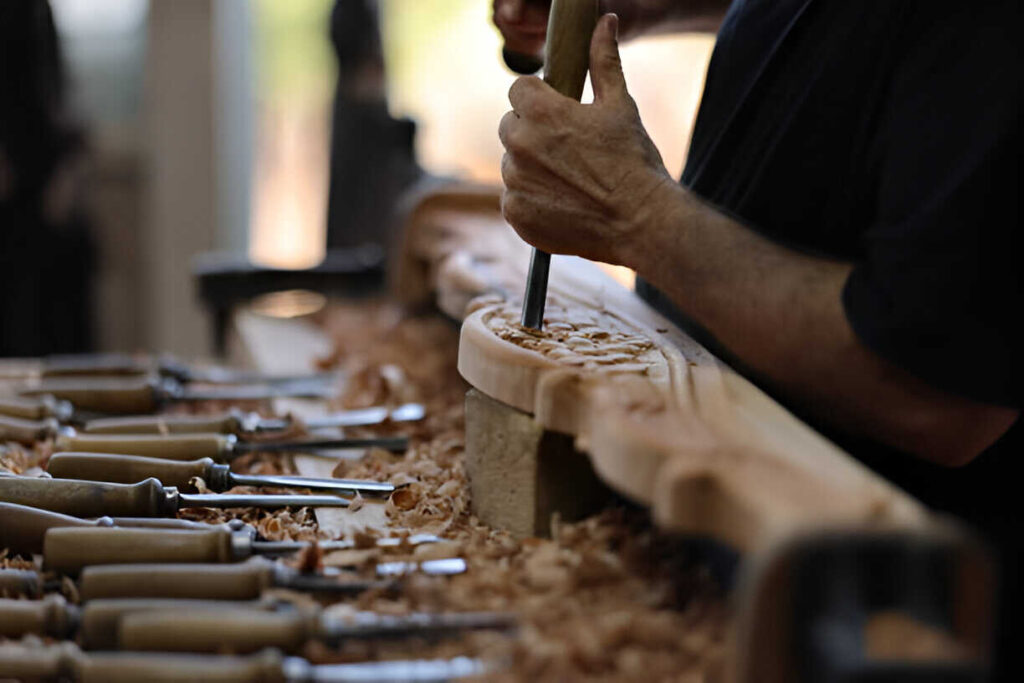
How to Become a Carpenter in 2025: Training, Skills & Salary Introduction Interested in pursuing a hands-on career? Learning how to become a carpenter in 2025 leads to a pleasant career that combines craftsmanship, hard labor, and long-term job security. Whether you want to design unique furniture, construct structures, or specialize in renovation, carpentry provides several opportunities for success. In this guide, we’ll cover all the essentials you need to know: training options, key skills, salary expectations and future opportunities. What Does a Carpenter Do? Carpenters are skilled tradespeople who use wood and other materials to construct, install, and repair buildings and fittings. Some daily responsibilities include: Read blueprints and technical drawings. Measuring, cutting, and assembling materials. Install doors, windows, cabinets and drywall. Making repairs on wooden buildings Framing residential and commercial structures. Why Choose Carpentry in 2025? High Demand: The building business continues to expand, creating a high need for carpenters. Hands-On Work: Perfect for people who like to work with tools and move around a lot. Diverse Specializations: Finish woodwork, framing, and residential and industrial work. Earning Potential: Pay that is competitive and has room to grow. Apprenticeships Available: Many people can learn and earn money simultaneously. The Bureau of Labor Statistics of the United States of America projects that the number of jobs available for carpenters will increase by 2% between the years 2022 and 2032. Step-by-Step: How to Become a Carpenter in 2025 1. Complete High School or Equivalent Most employers want you to have a high school education or GED. Courses in arithmetic, woodworking, and drafting might be beneficial. 2. Choose a Training Path You have two major options: Trade School/Technical College Provides classroom-based carpentry curriculum. It often lasts between six months and two years. Carpenter Apprenticeship Programs On-the-job training with a certified carpenter Usually lasts 3-4 years Frequently combines paid labor and classroom learning. Interested in learning more about apprenticeships? For more information on apprenticeship programs for carpenters, see our comprehensive guide. 3. Gain On-the-Job Experience Practical practice is critical. When you do an internship or your first job, you’ll: Find out how to use both hand and power tools. Know the rules for safety and building codes Take part in real building projects 4. Consider Certification (Optional but Beneficial) Certifications help you stand out: OSHA Safety Certification National Association of the Remodeling Industry (NARI) LEED Certification (for green building) 5. Specialize in the Carpentry Field You can become an expert in: Finish Carpentry Framing Furniture Making Cabinetry Restoration Key Skills Every Carpenter Needs Mathematics & Measurement Attention to Detail Blueprint Reading Physical Stamina Problem-Solving Time Management Soft skills, such as cooperation and communication, are also essential, particularly on building sites with multiple contractors. Tools and Technology Used These days, builders use both old-fashioned and high-tech tools: Hand tools like hammers, chisels, and tape measures Power tools like drills, saws, and sanders Software: CAD tools and software for planning How Much Do Carpenters Make in 2025? Entry-Level $35,000 – $45,000 annually Experienced $50,000 – $65,000 Specialized Carpenters $70,000+ (e.g., finish carpenters, cabinetmakers) Indeed, Glassdoor offers updated salary estimates based on your location. Career Outlook and Opportunities Carpenters can advance to: Construction foreman Project manager General contractor Business owner Also, if you want to get better at what you do, look for More Information that are connected, like electrical or plumbing work. For example, builders who use their skills to fix things might find it helpful to know how to set up a Window AC Installation Unit. Conclusion There’s no better time than now to learn how to become a carpenter in 2025. The trade offers numerous job openings, competitive pay, and various learning opportunities that can help you achieve your goals. Learn how to be a carpenter today. You can have a strong, stable, and satisfying job if you do it through an internship or trade school. Start building your future—literally. Frequently Asked Questions (FAQs) How long does it take to become a carpenter? Apprenticeships typically last 3-4 years, whereas trade school training ranges from 6 to 24 months. Can I become a carpenter without completing an apprenticeship? Yes, but hands-on instruction is necessary. Consider internships or entry-level employment. Do builders have to get a license? It varies from state to state or country to country. Some individuals require licenses to perform specific types of work. Is carpentry a viable long-term career? Yes. It provides work security, a variety of specialties, and the opportunity to start your own business. Can a carpenter work in both home and business settings? Absolutely. Many people begin in one position and then progress to another as their experience grows. References U.S. Bureau of Labor Statistics – Carpenters OSHA Training
Carpenter Apprenticeship Programs: Skills, Pay & Opportunities
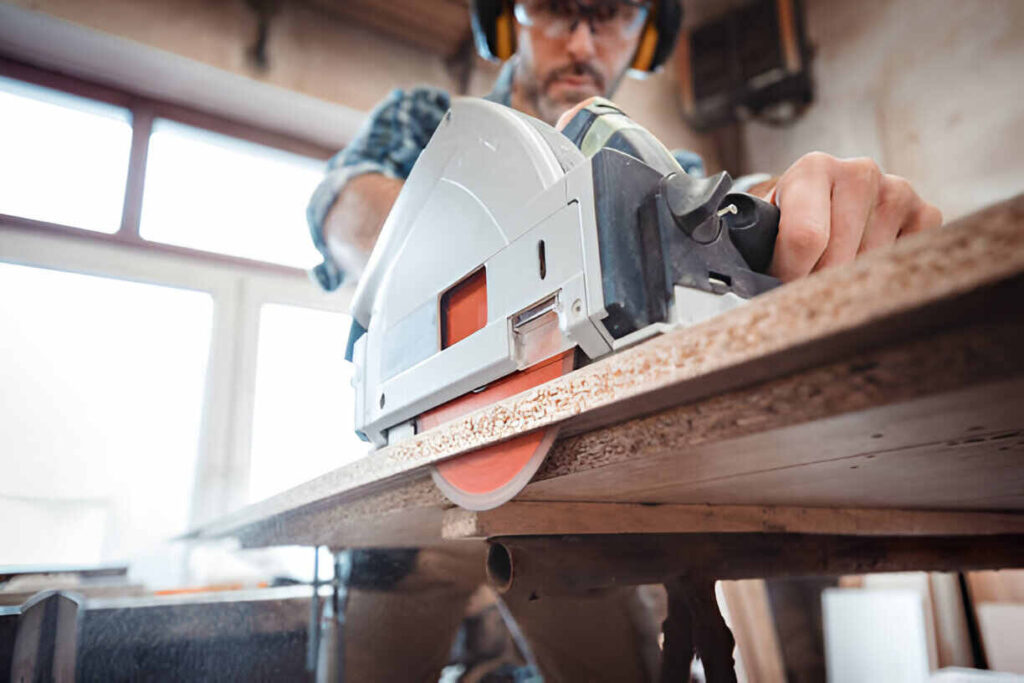
Carpenter Apprenticeship Programs: Skills, Pay & Opportunities Introduction Are you thinking about becoming a carpenter? An internship as a carpenter is a great way to earn money while learning the necessary job skills at the same time. Knowing what a carpenter apprenticeship has to offer can help you make wise choices, whether you’re just out of school or want to change careers. After training, you can look into different carpentry services that fit your skills and hobbies, such as remodeling homes or making furniture. What Is a Carpenter Apprenticeship? An internship for a carpenter is a structured training program that combines classroom learning with hands-on experience. Most of the time, unions, companies, or trade groups fund these programs, which typically last for three to four years. Key Components: Hands-on Training: Apprentices work for more experienced journeymen. Classroom instruction covers safety, understanding blueprints, and math for woodworking. Certifications: Many classes lead to skill certifications that are widely accepted. Skills You’ll Learn As a carpentry student, you will master a wide range of valuable and practical technical skills. Core Skills: Getting wood and other items measured, cut, and shaped Learning how to read plans and scientific drawings Having power and hand tools Putting up floors, walls, and roofs Putting in cabinets, doors, and windows These skills are necessary for most carpentry services, whether they are in a home, a business, or an industrial setting. Types of Carpentry You Can Specialize In You can choose to focus on a particular area of carpentry while you are a student. Common Specializations: Rough Carpentry: Mostly about framing and building things. Finish Carpentry: Trim, molding, and cabinets are some of the details that require attention. Formwork Carpentry: Used to build with concrete. Scenic Carpentry: Makes sets for movies and shows. Each field has its job opportunities and demand levels. How Much Do Carpenter Apprentices Get Paid? One good thing about being a trainee builder is that you can make money while you learn. Average Pay: They get 40 to 50 percent of a journeyman’s pay in their first year. As you move through the class, your pay goes up. The national average is between $15 and $20 an hour, but some places pay more. According to BLS.gov, the median annual wage for carpenters in 2023 was approximately $52,400. Requirements for Entry The following are the general requirements for most carpenter training programs: Common Requirements: Proof of high school or GED Minimum age (usually 18) The physical ability to do hard work Simple reading and math skills Some schools might need you to take an ability test or do work before you start your apprenticeship. Where to Find Apprenticeship Programs You can find a carpenter job near you in several ways. Resources: Local unions or trade schools Job Corps programs Online databases like Apprenticeship.gov Community colleges with trade programs Conduct your study and apply early, as some schools have limited enrollment. Long-Term Opportunities After Apprenticeship Getting through an internship can lead to many different jobs. Career Options: Journeyman Carpenter Foreman or Site Supervisor Independent Contractor Specialty Carpenter (for example, someone who makes cabinets or sets) Many skilled carpenters go on to start their own companies, offering a range of different carpentry services. Conclusion An apprenticeship as a builder is more than just a job; it’s a way to start a satisfying, hands-on career. It’s an excellent investment in your future because you will get complete training, steady pay, and chances to grow over time. Also, once you finish your training, you’ll be able to provide a wide range of carpentry services to both homes and businesses. An internship as a carpenter could be the right way to start building your future if you’re ready. FAQs 1. How long does a carpenter’s apprenticeship last? It typically lasts three to four years, depending on the curriculum and local conditions. 2. Do I require prior experience? No, most programs are geared toward individuals with no prior experience in carpentry. 3. Can I get college credit for an apprenticeship? Yes, several programs collaborate with community institutions to provide credits. 4. Is certification necessary following the apprenticeship? Some states need a license, while others accept an apprenticeship certificate as adequate proof of competency. 5. Are carpenter apprenticeships in demand? Yes, due to continuous building demands and the retirement of tradespeople, demand remains strong.
Carpenter Services for Furniture & Repairs
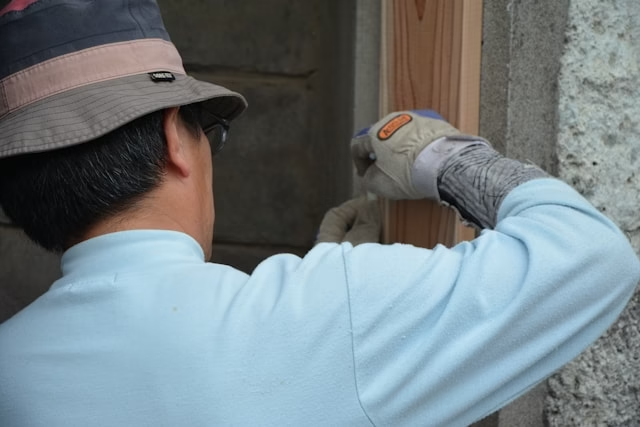
Carpenter Services for Furniture & Repairs When it comes to home improvement, few trades are as essential as carpentry. Whether you’re remodeling your home, repairing furniture, or building custom pieces, professional carpenter services play a vital role. From structural framing to intricate woodwork, carpenters bring both craftsmanship and functionality to residential and commercial spaces. What Are Carpenter Services? Carpenter services encompass a wide range of tasks that involve cutting, shaping, and installing wood and other materials. These services can vary significantly depending on the needs of the client and the carpenter’s specialization, whether you’re hiring a Commercial Carpenter for large-scale construction or a finished carpenter for interior details. Common Carpenter Services Include: Custom furniture design and build Furniture repair and restoration Door and window installation Kitchen cabinet fitting Shelving and storage solutions Flooring installation and repair Trim and molding work Deck building and repair Types of Carpenters Different carpenters specialize in various areas of woodworking. Understanding these distinctions helps you choose the right professional for your project. 1. Rough Carpenters Focus on structural elements such as framing and roofing. They work on the foundational aspects of buildings. 2. Finish Carpenters These carpenters deal with detailed work, such as installing baseboards, trim, cabinetry, and other final touches. 3. Furniture Carpenters Also known as cabinetmakers, they specialize in making custom furniture, cabinetry, and built-ins. 4. Repair Carpenters Experts in restoring damaged woodwork and repairing furniture, doors, and other wooden elements. Why Hire a Professional Carpenter? Hiring a professional for carpenter services offers numerous advantages: Expertise: Skilled carpenters understand structural integrity, aesthetics, and proper installation techniques. Time-Saving: Professionals complete jobs more efficiently than DIY efforts. Customization: Get furniture or repairs tailored to your style and space. Quality Materials: Carpenters have access to high-quality lumber and tools. Choosing the Right Carpenter Before hiring a carpenter, consider the following factors: Experience and Specialization Make sure they have expertise in the specific service you require (e.g., furniture repair vs. structural work). Portfolio and References Ask for examples of past work and contact previous clients. Licensing and Insurance Ensure they are licensed (if applicable in your state) and carry liability insurance. Cost Estimates Request a detailed quote to avoid hidden charges and understand the scope of work. Popular Carpenter Services for Homeowners Custom Furniture Professionally crafted furniture adds a unique touch to your space. Whether it’s a dining table, bookshelf, or entertainment unit, custom-built pieces are designed to last. Furniture Repairs Repairing broken or worn-out furniture can save you money and preserve sentimental pieces. Carpenters can fix joints, refinish surfaces, and replace parts. Kitchen Renovations Carpenters can build and install cabinets, kitchen islands, and pantry shelving, dramatically improving the function and style of your kitchen. Closet and Storage Solutions Custom closets and built-in shelving maximize storage space while maintaining a cohesive design. Exterior Carpentry Includes decks, pergolas, fences, and garden furniture—enhancing your home’s outdoor appeal. Tips for Maintaining Wood Furniture To extend the life of your wooden furniture, follow these simple maintenance tips: Dust regularly using a microfiber cloth Use coasters and placemats to avoid stains Keep furniture away from direct sunlight and heat Apply wood polish or wax every few months Address any small damage before it worsens Conclusion Carpenter services are essential for both functional and aesthetic improvements to your home. If you want to fix up old furniture, put in handmade cabinets, or do a home makeover, you should hire a professional carpenter to do the job right. Pick carefully, take care of it regularly, and enjoy the benefits of well-made furniture. FAQs About Carpenter Services 1. How much do carpenter services cost? Costs vary depending on the type of work, complexity, and location. Simple repairs may cost $50-$200, while custom furniture can range from $500 to several thousand dollars. 2. How long does a typical furniture repair take? Most repairs take a few hours to a few days, depending on the damage and materials needed. 3. Can carpenters work with materials other than wood? Yes, many carpenters also work with MDF, plywood, laminates, and sometimes metal or glass for specific projects. 4. Is it cheaper to repair or replace furniture? In many cases, repairs are more cost-effective, especially for high-quality or sentimental pieces. 5. Do I need a permit for carpentry work? For minor tasks like furniture repair, no. For structural work or large renovations, local regulations may require permits. External References National Association of Home Builders – NAHB This Old House: Wood Furniture Repair Tips
Commercial Carpenter vs. Residential Carpenter
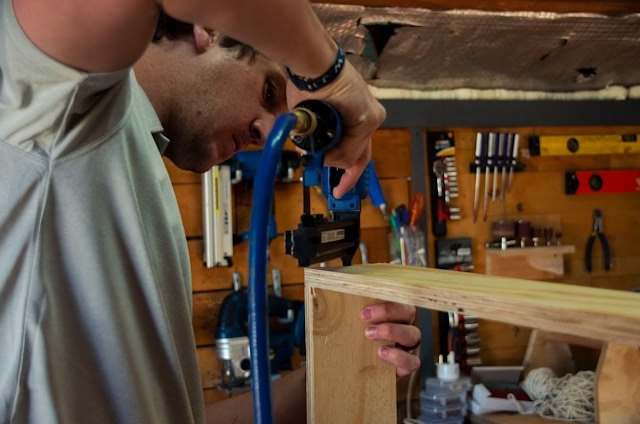
Commercial Carpenter vs. Residential Carpenter: What’s the Difference? Woodworking, or woodworking, is an important part of building our homes, businesses, schools and skyscrapers. However, not every builder does the same kinds of jobs. Commercial carpenter and home carpenters are the two main types of carpenters. Another job is the “finish carpenter,” whose job it is to put the finishing touches on a building. Knowing the differences between these jobs can help people hire the right professional for their projects and help people who want to become builders find a career path that fits their skills and interests. What Is a Commercial Carpenter? As their name suggests, commercial carpenters work on big building projects like shopping malls, office buildings, schools, hospitals and factories. Their job is very important for both the structure and the finishing of business buildings. Common Tasks of Commercial Carpenters Frames for big houses Putting up floors, ceilings, and drywall Putting together base forms out of concrete Building staircases and ramps Learning how to read plans and scientific drawings Making sure projects follow the rules for business buildings Tools Used A lot of the time, commercial builders use heavy-duty tools and machines like Power saws and nail guns that run on air Drills and mixers for concrete Laser levels and blocks for frames Work platforms and lifts What Is a Residential Carpenter? As the name suggests, a domestic carpenter works on smaller jobs like homes, flats and small apartment buildings. Their work is often more personalized and focused on the little things. Common Tasks of Residential Carpenters Building and fixing the walls, roofs and floors of homes Putting in doors, cabinets and trim Building porches, decks and fences Making furniture unique for homes Working together with electricians and plumbers Tools Used Most of the time, residential builders use: Saws and holes for the round Tapes and tools for measuring Sandpaper and nail guns Chisels and tools for wood There is also a specialized part called “Finish Carpenter,” whose job it is to add the finishing touches to both business and household projects, such as trim, baseboards and custom furniture. Key Differences Between Commercial and Residential Carpenters 1. Project Scale and Scope Commercial carpenters make big buildings with complicated systems. These buildings often have more than one floor. Residential carpenters work on smaller jobs at people’s homes. 2. Building Codes and Regulations There are tighter safety and building rules for commercial projects. Even though residential rules are less strict, people still have to follow the laws in their area. 3. Work Environment Most of the time, commercial carpenters work on busy building sites with groups of other pros. Residential carpenters usually work in more controlled and quiet places, sometimes in homes that are already occupied. 4. Skill Set To work as a commercial carpenter, you need to know how to use industrial products and build on a big scale. When you work on homes, you have to pay more attention to the little things and the finished work. 5. Income Potential Commercial carpenters may make more if they work for a company, the job is bigger or they are good at their job. Residential carpenters can still make good money, especially if they work for themselves or run their businesses. Which Career Is Right for You? Your hobbies, skills and long-term goals will help you decide whether to become a business or domestic handyman. Take a look at this: Pros of Commercial Carpentry Potential for higher income The chance to work on big, well-known projects Demand that stays the same in cities Pros of Residential Carpentry Custom projects that let you be creative More face-to-face time with clients Access for newcomers is easier Licensing and Certification Requirements No matter what kind of speciality they have, most builders must do the following: A high school certificate or something like it A trade school or apprenticeship program Safety license from OSHA (especially for business building) Some states may need more licenses, especially for freelancers who run their own companies. Job Outlook and Demand The US Bureau of Labor Statistics says that jobs for builders will grow by 2% from 2022 to 2032. This is because of projects to build new homes and fix up old ones. As towns grow and more people need homes, there will still be a need for both business and private builders. Conclusion Suppose you’re a homeowner looking to hire a skilled professional or a tradesperson thinking about becoming a carpenter. In that case, it’s important to know the difference between a business carpenter and a household carpenter. Each road has its chances, obstacles and benefits. Picking the right professional can make or break your job and picking the right career can change your life. Always talk to licensed, experienced builders who specialize in the work your job needs for reliable services or more advice. FAQ’s How do you become a commercial carpenter? An expert commercial carpenter must develop and install buildings in schools, hospitals, malls, offices and industries. They interpret drawings, build walls and ceilings and build enormous constructions. Commercial builders must follow safety and building requirements for major projects. Q1: What does a commercial carpenter do? A: Commercial carpenters build and finish structures in companies, malls, hospitals and schools. They frame walls, install drywall and ceilings, construct stairs and ramps, read blueprints and follow commercial building and safety regulations. Q2: What concrete component is a carpenter responsible for building in commercial construction? A: Carpenters manufacture temporary concrete forms for commercial construction. Precision is needed to shape foundations, columns, walls and slabs for structural stability and curing. Q3: How much do commercial carpenters make? A: Experience, region and union membership affect commercial carpenters’ pay. Most US commercial carpenters make $45,000–$70,000, with skilled or unionized ones earning $75,000 or more. Average hourly rates are $22–35. Source U.S. Bureau of Labor Statistics – Carpenters